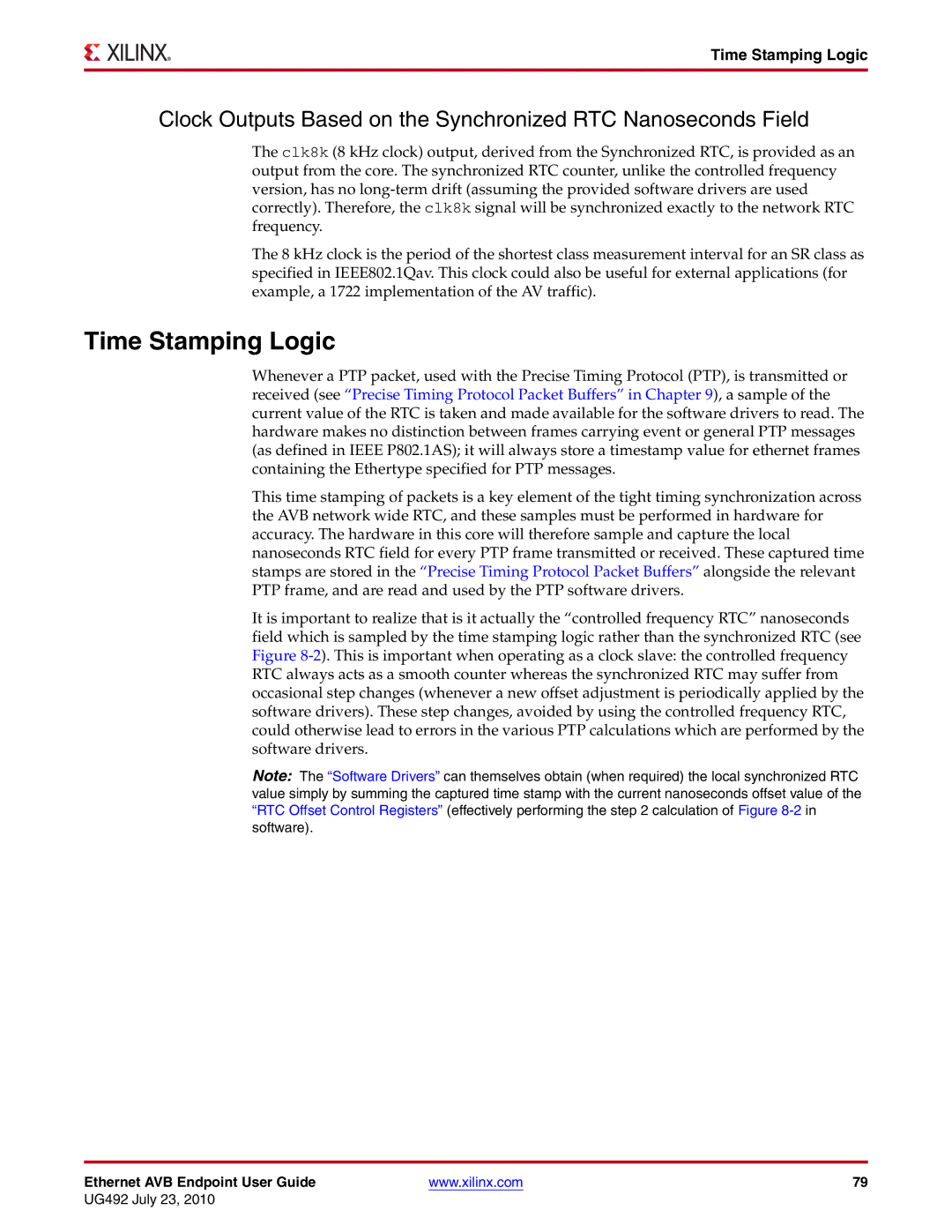
Time Stamping Logic
Clock Outputs Based on the Synchronized RTC Nanoseconds Field
The clk8k (8 kHz clock) output, derived from the Synchronized RTC, is provided as an output from the core. The synchronized RTC counter, unlike the controlled frequency version, has no
The 8 kHz clock is the period of the shortest class measurement interval for an SR class as specified in IEEE802.1Qav. This clock could also be useful for external applications (for example, a 1722 implementation of the AV traffic).
Time Stamping Logic
Whenever a PTP packet, used with the Precise Timing Protocol (PTP), is transmitted or received (see “Precise Timing Protocol Packet Buffers” in Chapter 9), a sample of the current value of the RTC is taken and made available for the software drivers to read. The hardware makes no distinction between frames carrying event or general PTP messages (as defined in IEEE P802.1AS); it will always store a timestamp value for ethernet frames containing the Ethertype specified for PTP messages.
This time stamping of packets is a key element of the tight timing synchronization across the AVB network wide RTC, and these samples must be performed in hardware for accuracy. The hardware in this core will therefore sample and capture the local nanoseconds RTC field for every PTP frame transmitted or received. These captured time stamps are stored in the “Precise Timing Protocol Packet Buffers” alongside the relevant PTP frame, and are read and used by the PTP software drivers.
It is important to realize that is it actually the “controlled frequency RTC” nanoseconds field which is sampled by the time stamping logic rather than the synchronized RTC (see Figure
Note: The “Software Drivers” can themselves obtain (when required) the local synchronized RTC value simply by summing the captured time stamp with the current nanoseconds offset value of the “RTC Offset Control Registers” (effectively performing the step 2 calculation of Figure
Ethernet AVB Endpoint User Guide | www.xilinx.com | 79 |
UG492 July 23, 2010
